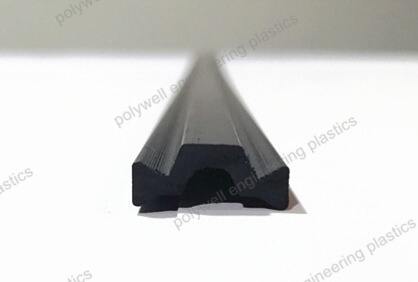
With the continuous shift towards energy saving within the construction sector, it has become clear that thermal break strips can considerably improve structures’ thermal performance. Crafted from PA66 GF25 POLYWELL thermal break strips are a practical and convenient method of reinforcing energy attributes of buildings. Such strips are essential to prevent thermal bridges which improve energy efficiency and comfort to occupants of residential and business premises.
Thermal bridging is heat flow through building components because of the presence of materials with conductive features within the building element which is a source of energy losses as well as discomfort. The problem becomes a challenge where buildings include aluminum for window and door fixtures. Aluminum is widely accepted as it is strong and lightweight; however, it offers challenges in the area of thermal connectivity. POLYWELL thermal break strips are crafted for this specific purpose. It is possible in this way to suspend the flow of warmth and keep improving thermal characteristics of windows and doors by adequate placing of these strips in between aluminum frames and other internal spaces.
In addition to energy efficiency, POLYWELL thermal break strips have several other benefits. One of them, which stands out, is the ability to control moisture within the buildings. When this moisture control is not done, condensation may take place, which may lead to the development of molds and cause damage to structures. Warm air can produce condensation when it comes into contact with cooler surfaces which creates conducive conditions for mold growth. This is particularly relevant in regions characterized by oppressive humidity or extreme temperature changes.
The POLYWELL thermal break strips are effective in both thermal and moisture control, but they also provide sound insulation as well. In terms of consequences for urban residents, sound pollution can be a huge problem. The use of thermal break strips is essential as expanding the use of thermal break strips expands the use of drainable jamb weeps which act to fill the mass and insulate the sound from outside. This element is most critical for residential properties where complete comfort towards peace and quietness to the occupants is required.
POLYWELL thermal break strips are very versatile and can be used in numerous applications. In aluminum, wood, or PVC framing materials, they can be integrated without any difficulty. Being compatible with a wide range of construction works such as POLYWELL thermal break strips are economical for use in such residential and commercial buildings. These strips can be added to the project’s designs without affecting the visual beauty or the idea of the project.
The issue of sustainability has become a primary concern in the contemporary construction industry, and POLYWELL thermal break strips satisfy such requirements. The strips help in energy waste reduction and therefore, assist in the carbon emissions of buildings which promotes green construction. With the public being more aware of their contribution to the environment, builders employing thermal break strips will satisfy the need for sustainable solution which is becoming more in demand.
Further, POLYWELL thermal break strips have advantages in the ease of installation. These well-engineered strips can be installed into existing construction systems easily, and panels can be installed within a very short time. This function reduces the time taken for the construction process but also increases the efficiency of the delivery of the project.
In conclusion, POLYWELL thermal strips have been created to last. Their functional characteristics allow them to resist environmental influences such as UV, moisture, and temperature extremes. This durability allows builders to use these strips confident that their thermal performance will never degrade, thus providing tremendous benefits to the owners and the occupants of the properties.
To summarize, POLYWELL thermal break strips are an important element of the thermal break in the improvement of performance of the building. Minimizing the risk of thermal bridging, controlling moisture, enhancing acoustic insulation, these strips offer eco efficiency in modern construction. Their adaptability, ecological efficiency, and availability of innovative technologies for their application make them quite attractive to builders and architects who are completing high-performance buildings in response to changing global environmental concerns.